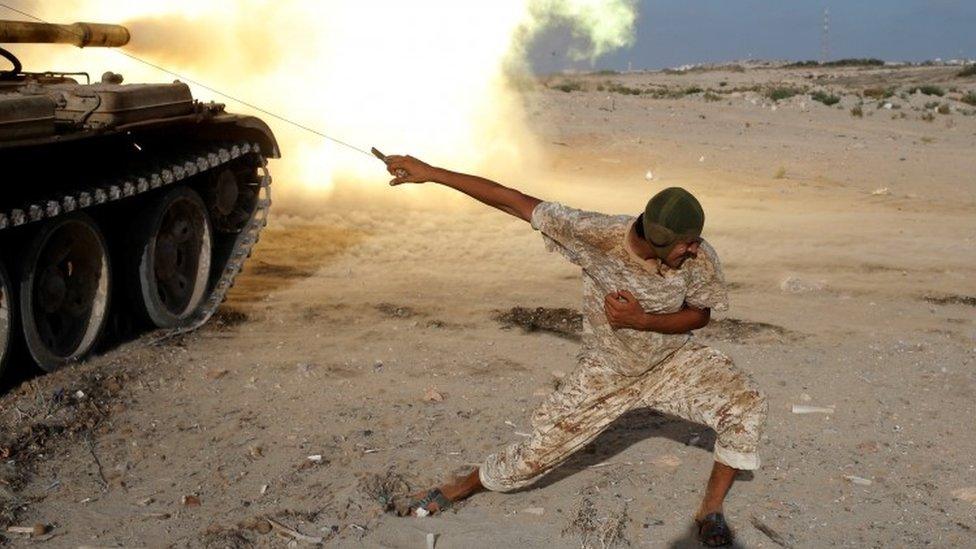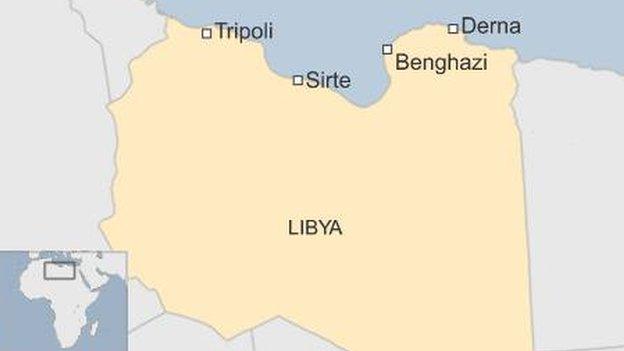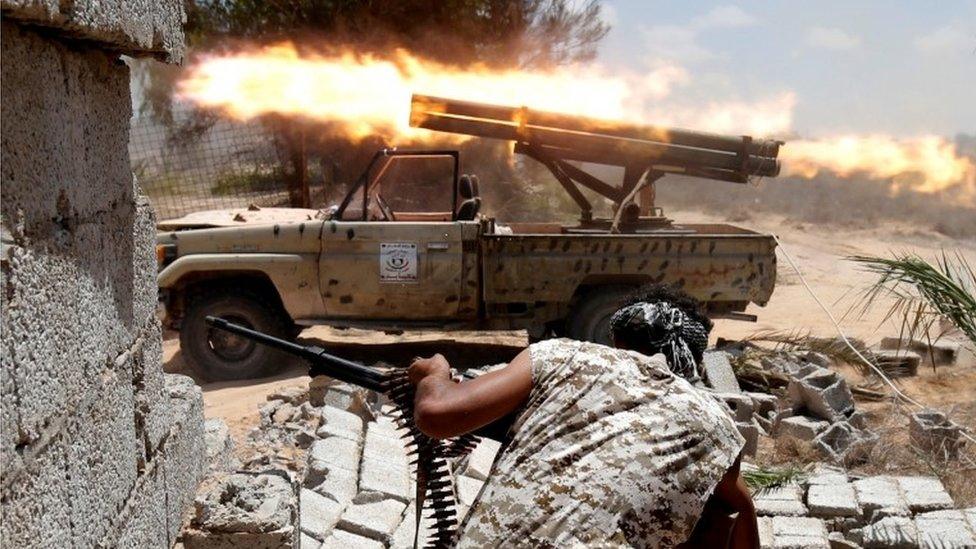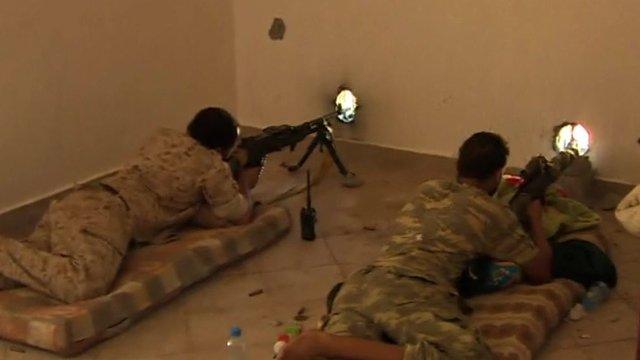What next for Islamic State in Libya after Sirte?
- Published
Feras Kilani meets the forces trying to rid Sirte of so-called Islamic State
Militants of so-called Islamic State (IS) are on the verge of being ousted completely from their stronghold in Libya's central coastal city of Sirte.
Militia groups aligned to the UN-brokered Libyan Government of National Accord launched an operation in May to rid Sirte of IS and regain control of the city. The battle to expel the jihadists has achieved more success recently with the help of US air strikes.
It has damaged the jihadists, but does not spell the end for their presence in the country.
Why is losing Sirte significant?
Losing Sirte is a blow to the group's image. In its propaganda, IS had repeatedly portrayed the city, close to western Europe, as a key position outside of its main areas of operation in Iraq and Syria.
IS turned key buildings in Sirte into its own institutions and prisons, and used the local radio station to air its propaganda.
The city, which was the birthplace of former leader Muammar Gaddafi, also brought IS close to Libya's oil-rich area.
Does IS have any other strongholds in Libya?
No, but it is still present elsewhere in the country.
Its militants have long been fighting other forces in pockets of Libya's second city, Benghazi, and have recently launched several attacks on its western outskirts.

Forces loyal to Libya's UN-backed government managed to oust IS fighters from Sirte, the birthplace of former leader Muammar Gaddafi
IS took complete control of Sirte in June 2015 after it was pushed out of its initial stronghold of Derna in Libya's far east by rival militias aligned with al-Qaeda
How many IS militants are there in Libya?
There are no reliable figures about the number of IS militants in Libya but it is estimated that the group has about 5,000 fighters in the country, many of who were thought to have been deployed in Sirte.
What might IS do now?
Caught on the back foot, the group may initially dissolve into desert areas and revert to earlier tactics.
Before it lost Derna, the group made its presence felt elsewhere in Libya by carrying out repeated bombings in the key cities of Tripoli and Benghazi, as well as of oil installations partly run by Western companies.
And now, putting up resistance as it loses the battle in Sirte, IS has again been employing suicide bombings as a means of attack.
Where might they go next?
Some believe IS fighters might flee to remote areas in the south. If they choose this route, they could head for the Sahel-Sahara area, where other jihadists are present and operate relatively freely.
Libya's importance to IS means that the militants may eventually regroup and emerge in another part of the country, seeking to take land that they can then showcase as a major gain.

Bani Walid, another former Gaddafi bastion, is one option for IS fighters. Local media recently indicated that air strikes hit a road in the city's south-east, which reports said were "often used" by IS fighters.
The militants may seek to boost their forces in and around Benghazi.
Or they may head towards Sabratha in the west, where they used to run a large training camp. This site might not hold much appeal, however, as it was the target of a US air strike in February.
Another option is Ajdabiya, which lies between Sirte and Benghazi, where they previously had a presence. There, however, they would have to confront al-Qaeda-linked rivals and the Libyan National Army of the Tobruk-based parliament.
But while the group might want to seize territory, it may struggle achieve this in the face of mounting pressure and US air strikes.
BBC Monitoring, external reports and analyses news from TV, radio, web and print media around the world. You can follow BBC Monitoring on Twitter , externaland Facebook, external.
- Published10 August 2016

- Published26 August 2016
